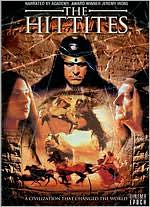 Though in contemporary discussions of ancient history they are often relegated to little more than a footnote, The Hittites once reigned as one of the most powerful tribes in the Middle East. By translating scripts and glyphs emblazoned on tablets several millennia ago, this program recounts the dramatic tale of the group and its legacy, thus transporting the audience some 3500 years back in time.
Though in contemporary discussions of ancient history they are often relegated to little more than a footnote, The Hittites once reigned as one of the most powerful tribes in the Middle East. By translating scripts and glyphs emblazoned on tablets several millennia ago, this program recounts the dramatic tale of the group and its legacy, thus transporting the audience some 3500 years back in time. A combination of interviews and dramatic reenactments bring to life seminal Hittite turning points such as The Battle of Kadesh (in which the tribe defeated the seemingly impenetrable armies of Egypt's King Rameses II). This production was filmed in six countries including Egypt, Syria and Turkey, using over 20000 props and sets that recreate Hittite-era battle chariots, cities, armor, weaponry and objets d'art. Jeremy Irons narrates; The Prague Symphony Orchestra provides the documentary's score. ~ Nathan Southern, All Movie Guide...